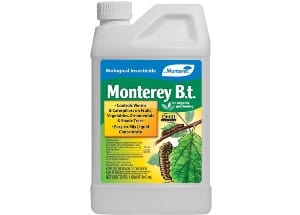Warmer seasons often bring many surprises that spring out of nowhere and begin their feast on plant leaves, stems, and fruit. Caterpillars are a problem that every respectable garden or farm keeper has to deal with. Though they might not be intimidating at first, these larvae can cause significant damage in the long run.
I’ve dealt with them before and know what it’s like to keep on looking for remedies and treatments against them. Today, I’d love to share some of my experience on how to get rid of caterpillars. Here we go!

Caterpillars and Consequences: How to Detect, Identify, and Treat
Before getting to the big guns, and learning how to kill caterpillars, it’s vital to understand what they are, where they come from, why they keep on appearing. All of this is strongly dependent on a caterpillar’s species, time of the year, as well as the food source they have found.
They can come in all varieties of sizes, shapes, and colors, which makes them rather difficult to have a grasp of. However, it all clears up once you get the basics about them. Now, let’s take a better look at the yet-to-be winged insects and learn how to deal with them.
What are caterpillars?
They are the second stage out of a four-stage lifecycle of Lepidoptera, which includes the common moth and butterfly. While the insect is only halfway through its transformation to become a moth or butterfly, it already possesses certain resemblances to its future form. Most of them are common for each species, while others may vary since there are around 200,000 different types.
Caterpillars, like Tent Caterpillars, are soft in their body and have a weak exoskeleton, which leads to their fragility and decreased movement speed. The body consists of the head, thorax, and belly. Just like a moth or butterfly, a larva has 2-6 pairs of eyes located on the top of the head with a little curve.
Interestingly, the caterpillar stage lasts for a shy of two weeks before it turns into a winged insect. Meanwhile, they are still the most voracious of all the lifecycle stages, requiring a constant flow of food and nutrients. They normally feed on plants, flowers, and vines.
What attracts caterpillars?

The major attractant for caterpillars is, of course, food. Though the larvae aren’t really picky about what they eat, they still have some preferences that cause them to run towards the source. For instance, Clover and Dogwood are the insect’s favorites.
Because caterpillars find the plants both full of nutrients and secure enough to lay their eggs, having Clover in your garden might be the reason for having a caterpillar infestation.
Moreover, the larvae do enjoy peace and brushes. Apparently, the insects always need to have a cozy place to store their eggs; and shady, tall grass is simply perfect for them. Also, it provides protection against birds and critters that may not only disturb their transformation but also devour them.
Caterpillar Damage
Before getting to the bottom of caterpillar removal, you have to understand that the larvae are virtually harmless to humans. However, considering their need for nutrients for transformation, insects can be a real threat to your crops and plants. Not only do they chew on leaves, but they can also harm the fruit and flowering, leading to the complete annihilation of your greens.
The primary food source for caterpillars is leaves. They are the easiest to get to and provide the larvae with a vital shade, protecting them from direct sunlight. Often, a population of caterpillar pests of cruciferous crops can defoliate a whole garden within a matter of 2-3 weeks and then move to the next patch.
Because the insects aren’t picky about eating the fruit either, I would always find a caterpillar in my house, hanging on my decorative lemon tree. Though I managed to get rid of the population with a couple of remedies, the insects left enough scarring to make the dwarf tree unappealing. Pity, since it was my favorite.
There are species, like Borers, that have a nasty habit of piling up their eggs near the stem. Once hatched, the small caterpillars begin to grind holes in the stem, tunneling it in and out, causing immeasurable damage to the tree. Therefore, it’s essential to apply real force to stop caterpillars from eating plants and trees before it’s too late.
How to get rid of caterpillars?
There are a couple of ways to get rid of caterpillars on plants without inflicting any damage on your plants. Some of them are more natural than others but all of them can guarantee positive results when used properly. You can:
- Apply water and dish soap.
Yes, this one is a remedy that has been around for a while. If you smear some soap solution on infested plants, it will make the surface hard to stick to, causing caterpillars and other insects to find another plant to feast on.
- Mix neem oil with lukewarm water and spray it over plants, trees, and flowers.
Unlike soap, neem oil is rather harmful to insects, affecting their airways and exoskeleton. It’s great to use in cases of heavy infestations when caterpillars have already done some damage to your patch.
- Use Bacillus (BT) to eliminate the pests.
BT is another organic component often extracted from the soil. It’s nice against caterpillars whose exoskeleton is soft enough to be penetrated. When used duly, the substance will affect the insect’s nervous system, causing starvation and death.
- Spray Pyrethrin to secure the perimeter.
Extracted from flowers, the element is a natural caterpillar insecticide that kills them on the spot. Make sure not to abuse it too much, it can harm vegetables.
- Attract birds by placing bird feeders.
Birds are voracious caterpillar fans and they will do an extra mile to consume them. Having birds on your property comes in handy for getting rid of caterpillars.
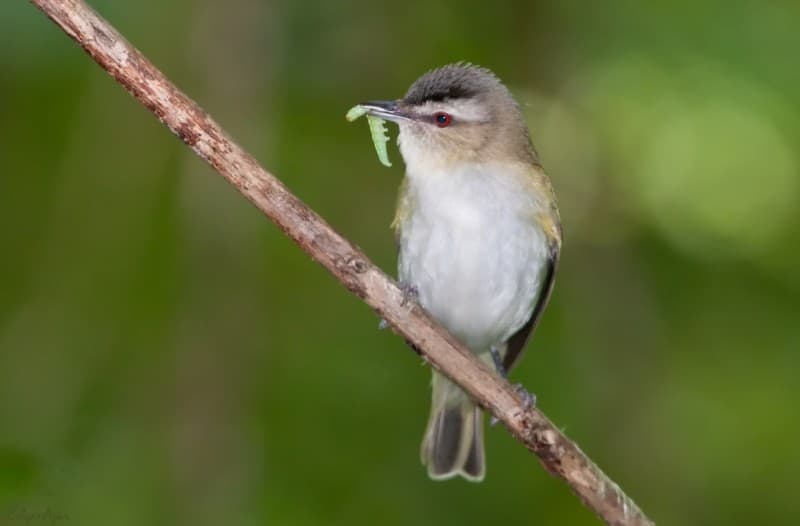
- Gather the insects by hand.
Though it takes quite some time, removing them manually is a proven method, helping with these little green worms eating plants.
[su_note note_color=”#e5e2d4″]Related post: How to Get Rid of Grubs [/su_note]
How to prevent caterpillars?
Let’s see how to keep caterpillars out of the garden, house, or property.
Step 1: Inspect
Checking the plants for caterpillars and other insects should be a routine. Early detection can be a useful tool in preventing the larvae from spreading and infesting the area. Always look under the leaves and around the stem, where they like hiding from sunlight.
Step 2: Conduct preventative care
Using water and soap is most useful for ensuring that caterpillars won’t be able to climb all the way up. Spray the solution on leaves or wash up each plant softly without too much pressure. Do this regularly early in spring and throughout the whole summer.
Step 3: Show no mercy
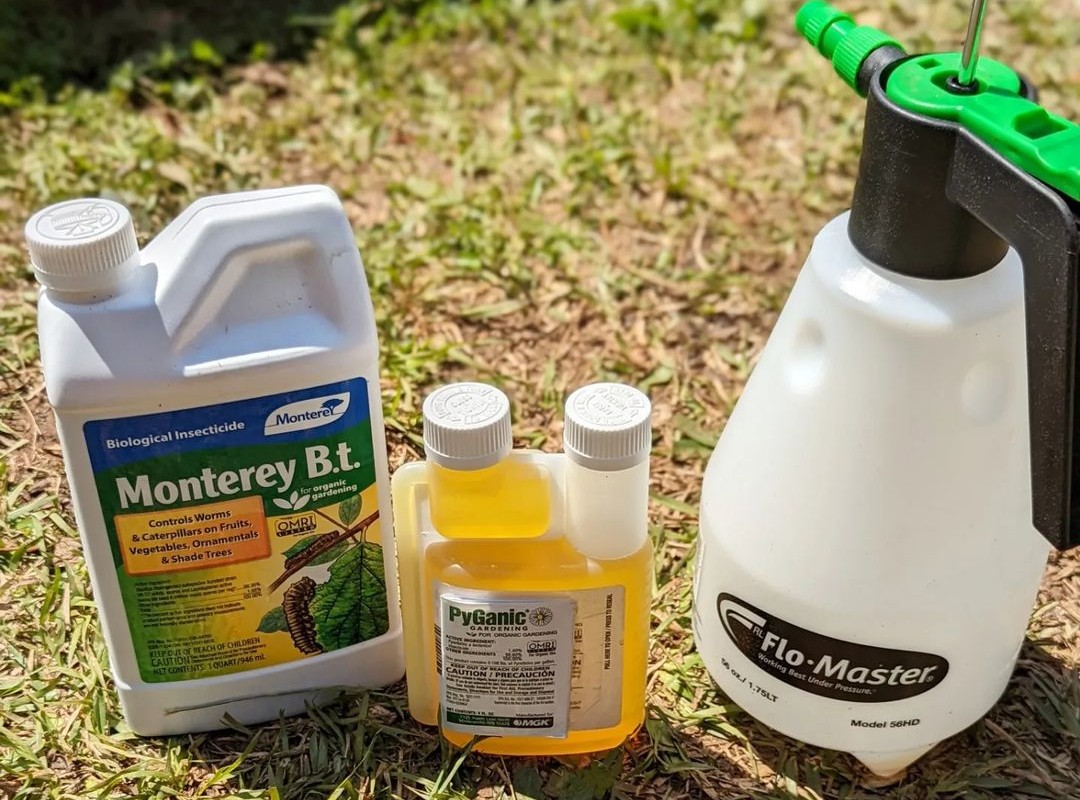
Once you see a single caterpillar resting on the plant leaves, get rid of it instantly. If you allow even one insect to settle down in your patch or garden, there are great chances of them populating the whole area. Therefore, remove each caterpillar with no exceptions.
Step 4: Apply professional treatments
Sprays and pesticides aren’t solely meant to kill the existing insects but can be useful for the overall organic caterpillar control. Apply sprays to the leaves and let them dry for some time. Use pesticides, like Pyrethrin and BT to get rid of large insects since natural remedies are unlikely to work on them.
Step 5: Arrange some clutter
Caterpillars love peace and seclusion. By placing a couple of bird feeders, you can ensure constant trespassing by birds that will hunt the insects. Also, you can hang a couple of wind chimes to make some more noise.
[su_note note_color=”#e5e2d4″]Related post: How to Get Rid of Crickets [/su_note]
Top 3 Best Caterpillar Treatments
If you’re wondering how to get rid of green caterpillars using professional treatments, I might be of assistance here. Throughout my practice, I’ve used many treatments for eliminating and preventing these worm-like insects. To take a load off your mind, here are a few proven treatments that know how to do their job.
1. Monterey B.t. Worm & Caterpillar Killer — Best Organic Caterpillar Killer Spray
[amazon box=”B00FGIGKXW” template=”vertical” tracking_id=”how-to-get-rid-of-caterpillars-20″ button_text=”Check price on Amazon” button_detail=”https://shareasale.com/r.cfm?b=410159&u=2583381&m=43235&urllink=www%2Edomyown%2Ecom%2Fmonterey%2Dbt%2Dinsecticide%2Dp%2D2821%2Ehtml&afftrack=how%20to%20get%20rid%20of%20caterpillars” button_detail_text=”Check price on DoMyOwn”]
Specifications:
- Item Form: Spray
- Item Volume: 32 Fluid Ounces
- Item Weight: 2.27 pounds
- Product Dimensions: 5 x 3 x 9 inches
- Target Species: Caterpillars And Worm Type Insects, Such As Cabbage Looper, Bagworm, Gypsy Moth, Fall Cankerworm, Elm Spanworm And Many More
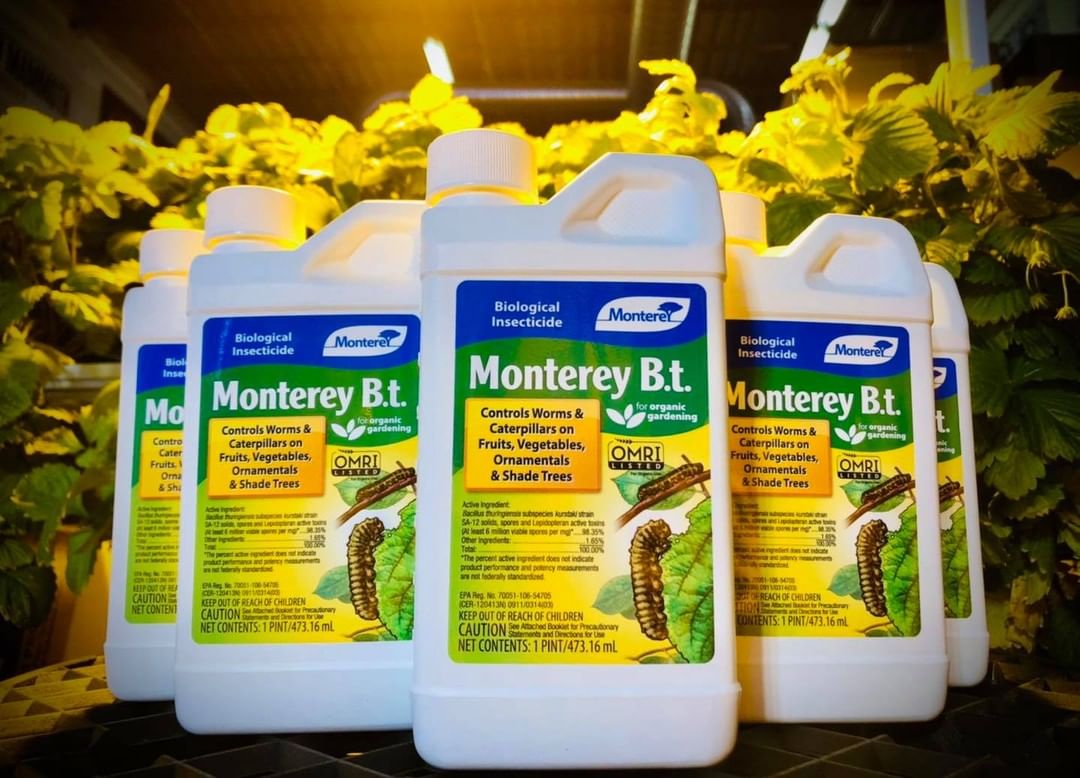
Organic and plant-friendly, the solution has no match when it comes to killing caterpillars and similar insects that have soft-haired skin. It’s completely approved by state pesticide bodies, like OMRI, which have testified that the treatment is safe for plant use.
Coming in two volume options, the product offers large coverage and requires very little preparatory work.
Because the treatment is based on B.t., it’s highly effective against insects at any caterpillar stage of development. Once sprayed on leaves and stems, the solution creates a residue that the insects consume with fiber. It causes their nervous system to shut down, leading to the inability to move, and, later, death from starvation.
| Pros: | Cons: |
|
|
2. BioAdvanced Systematic Plant Fertilizer and Insecticide — Best Caterpillar Insecticide for Trees
[amazon box=”B004TT36D6″ template=”vertical” tracking_id=”how-to-get-rid-of-caterpillars-20″ button_text=”Check price on Amazon” button_detail=”https://shareasale.com/r.cfm?b=410159&u=2583381&m=43235&urllink=www%2Edomyown%2Ecom%2Fbayer%2Dadvanced%2D12%2Dmonth%2Dtree%2Dand%2Dshrub%2Dprotect%2Dand%2Dfeed%2Dii%2Dconcentrate%2Dp%2D2031%2Ehtml&afftrack=how%20to%20get%20rid%20of%20caterpillars” button_detail_text=”Check price on DoMyOwn”]
Specifications:
- Active Ingredients: Imidacloprid 0.74%, Clothianidin 0.37%
- Item Volume: 32 fl. oz.
- Item Weight: 2.3 pounds
- Item Dimensions: 4.7 x 2.7 x 10.3 inches
- Target Species: Japanese Beetles, Emerald Ash Borers, Adelgids, Leafminers, Aphids, Caterpillars, and more
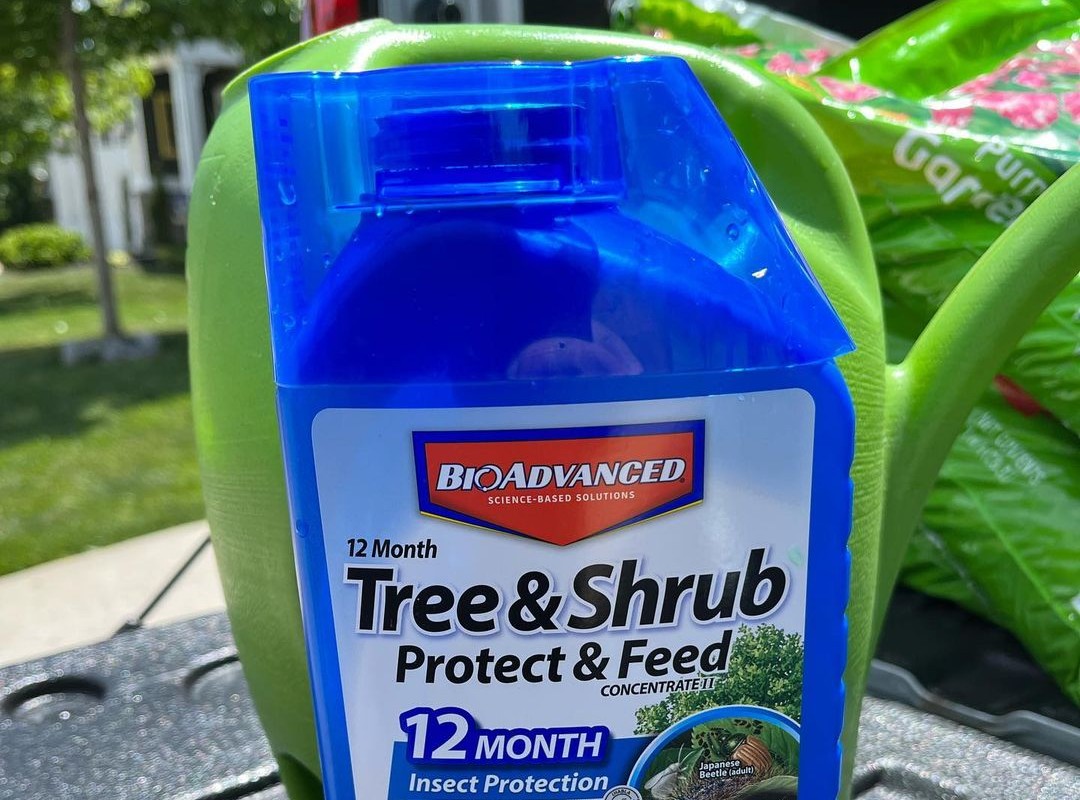
I love this product due to its versatility and promising results. The treatment is a blend of components that act both as a fertilizer for plants and trees and a pesticide that prevents caterpillars from spreading. Moreover, the effect isn’t limited to caterpillars but covers grown insects as well.
To activate the solution, it needs to be mixed with 2 gallons of water. The concoction is used for water both indoor and outdoor trees a couple of times a week. As a result, the treatment stays active for around a year to act as an organic caterpillar killer.
| Pros: | Cons: |
|
|
3. MgK PyGanic Gardening Insecticide — Best Pyrethrin Caterpillar Killer
[amazon box=”B01MSWWEX1″ template=”vertical” tracking_id=”how-to-get-rid-of-caterpillars-20″ button_text=”Check price on Amazon” button_detail=”https://shareasale.com/r.cfm?b=410159&u=2583381&m=43235&urllink=www%2Edomyown%2Ecom%2Fpyganic%2Dgardening%2Dp%2D16746%2Ehtml&afftrack=how%20to%20get%20rid%20of%20caterpillars” button_detail_text=”Check price on DoMyOwn”]
Specifications:
- Item Form: Spray
- Item Volume: 8 fl. oz.
- Item Weight: 0.6 Pounds
- Item Dimensions: 3 x 1.5 x 5 inches
- Target Species: More Than 200 Types Of Crop-Damaging Insects, Including Beetles, Mites, Roaches, And Ants
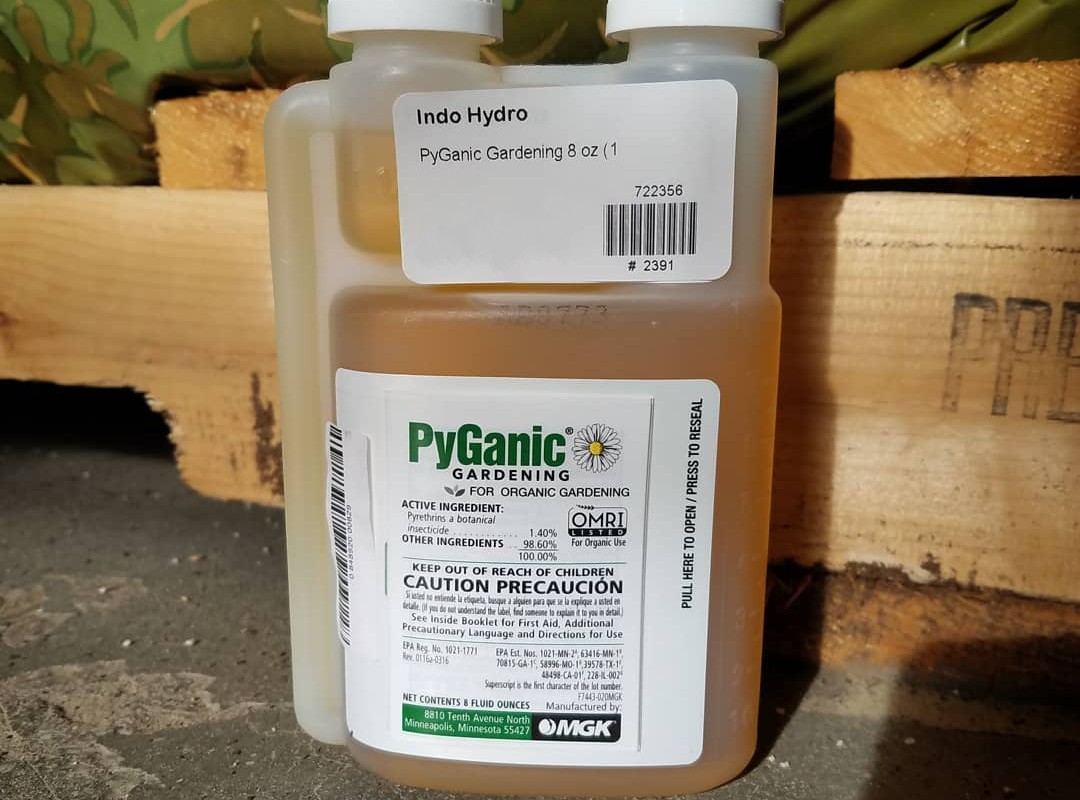
If you have a full-blown infestation, you need a stronger pesticide that can deal with caterpillars on the spot. Infused with Pyrethrin, the solution is lethal for the soft-skinned worms and kills them upon the first contact. Though the treatment is liquid, it can be applied in any season since it’s completely waterproof.
Harmless to plants, vegetables, and fruit, the product is applied as a spray by covering the tops and plants’ bottoms. When sprayed, it takes around 20 minutes for the product to begin killing caterpillars and lasts for around 12 hours. Normally, a week of regular reapplication should rid you of the insects for good.
| Pros: | Cons: |
|
|
FAQs
Have you got some more questions on how to get rid of caterpillars naturally? Check the following!
Does neem oil kill caterpillars?

Yes, it does. Neem oil is a natural caterpillar repellent because it possesses a limited range of toxicity that interacts with the caterpillar’s skin. Thus, leading to the caterpillar’s death.
Do caterpillars eat flowers?
It’s known that young caterpillars mainly chew on soft plant leaves since their biting apparatus is still underdeveloped. However, grown insects, especially Flowering Eating Caterpillar, are voracious and consume plant flowers and fruit.
How to stop caterpillars from climbing trees?
The best way to do so is to smear or spray the bark with a mixture of water and soap. It creates a slippery surface that caterpillars cannot cling to, causing them to fall every time they try. Don’t use any unproven pesticides to the bark since it can harm the tree.
What eats caterpillars?
There three main predators that pose a danger to caterpillars, i.e., birds, beetles, and wasps. All of them consume a large number of such insects due to their high levels of nutrients.
[su_note note_color=”#e5e2d4″]Related post: How to Get Rid of Earwigs [/su_note]
Butterflies or Not, Caterpillars Are No Pet for Your

Caterpillars cause no harm to humans due to their carnivorous nature. However, they might be a real growing pain when it comes to crops and pot plants.
Though we cannot blame them for simply trying to survive, allowing them to survive on our garden vegetables and flowers is not an option. To deal with the pests effectively, pick a treatment that suits your needs, like a spray or solution, and put it to action.
Anyway, I hope that after reading this article, you’ve found some useful information. What kind of treatments have you used before? Do you find natural remedies as effective as professional pesticides? Make sure to comment below!

References:
- Tent Caterpillars (Department of Environmental Conservation):https://www.dec.ny.gov/animals/7111.html
- Caterpillar Pests of Cruciferous Crops (Ministry of Agriculture, Food and Rural Affairs):
http://www.omafra.gov.on.ca/english/crops/facts/99-035.htm - Flower eating caterpillar (Queensland Government):
https://www.daf.qld.gov.au/business-priorities/agriculture/plants/fruit-vegetable/insect-pests/flower-eating-caterpillar

